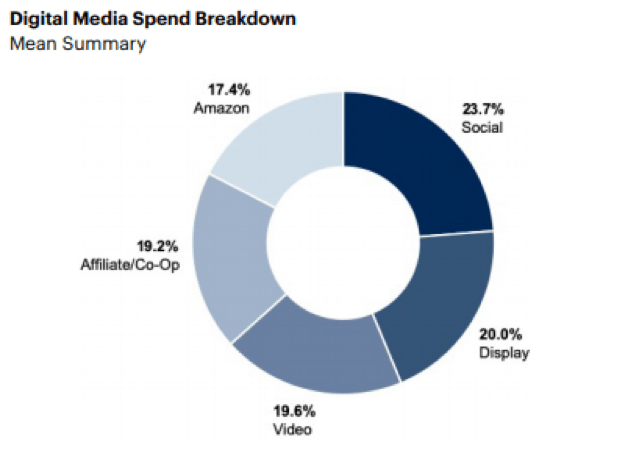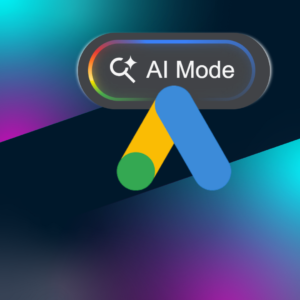DIGITAL MEDIA TRENDS 2020 AND BEYOND…
2019 has been a busy year in the Arke paid media team. Some key highlights include programmatic providers doing their best Lance Corporal Jones of Dad’s Army impression; telling everyone in the wake of the decline in third-party cookies “not to panic”, Google telling us repeatedly that we must embrace their automation in its every form, only to then call us up a few weeks later to tell our analysts what a fantastic job they’re doing in optimising our client advertising campaigns (100% true story); and our friends at Facebook essentially telling us in no uncertain terms that they’re going to hammer any advertisers that don’t follow their best practice… then go on to change their best practice, and not tell anyone.
Oh, how we laugh!

I was recently asked by a client to share our top media trends we foresee for 2020 and beyond, and we had so many that we thought we’d turn it into a series. You lucky devils.
Let’s start with a nice easy one…
Google Continues to Push Automation, Hard
Just under 7% of total marketing budgets are invested in search advertising, but when you add in the amount allocated to search engine optimisation, search marketing accounts for over 13% of the total budget.
When we examine other non-search forms of digital advertising, the budget split by marketing teams is pretty evenly spread:

Source: Gartner (September 2019)
Confidence is high in digital, with a belief in high efficacy from this form of advertising, but this efficacy is challenged if marketing decision-makers lack the data required to effectively target audiences with the right message at the right points in the customer journey.
This is where Google is pushing us. Collect more first-party data, automate your advertising strategy, integrate their marketing platform suite and track media performance vs customer acquisition.
A breakdown of some of the more commonly used Google automated ad products are:
Extensions
Can include call, message, site link, structured snippets, location, seller ratings, and callouts. Good if you have don’t have a sprawling product inventory and have an always-on paid search strategy. Bad if you have a vast and complex product portfolio. Unlike a manual extension, you can’t measure the performance of these.
Responsive
Mix and match. Input your headlines, images, descriptions and Google will pick combinations of these and test with different audience segments. Google is pushing for this to be standard practice for its display network, which its AI will then learn so that it can personalise the right advert for the right audience.
We have seen some improvement in performance using this approach for clients when benchmarking outcomes. However, on balance we still see better results from campaigns where we are manually selecting content and messaging according to each segment’s previous engagement with the brand. Good ol’ human brainpower still has some credit.
Dynamic
Dynamically generates adverts based on your products, URL’s, website content, customer segments etc. Good if you have comprehensive and reliable data on your customers and products and your website content is correctly structured, including titles and descriptions etc. Bad if you don’t, as you will erode your customer experience as we have seen some extremely questionable results from brands or agencies trying this, but without having done the necessary leg work at the beginning.
Start by auditing your website content and ensure your technical structure is sound.
Automation is great when it prevents us from carrying out repetitive tasks at scale. But for it to add value to the work done by human beings, it’s those people who must implement the initial strategy, which cannot be carried out by a machine. Your data also needs to be comprehensive and reliable, and you need to be able to make sense of it and make meaningful buying decisions from it.

Third-Party Cookie Blocking
Make no mistake, this is a HUGE shift in the online advertising world and it is reshaping not just advertising strategy but advertising businesses and the industry entirely.
So, what are third party cookies? These are created by domains other than the one you are visiting. They are traditionally used for tracking and advertising by third parties to the website you are visiting, such as DoubleClick.
Safari web browser, which accounts for 14.6% of web traffic, has already done away with them completely on mobile and now also removes first-party cookies (dropped by the domain you are visiting) after seven days.
Under growing pressure from regulators, Google announced earlier in the year that it would be making it easier for the users of its Chrome browser, which accounts for 59.2% of web traffic, to remove third-party cookies entirely, with debate still raging on as to whether they will follow Safari’s lead and remove them automatically, in time to come.
What does this mean for marketers?
We’re going to see a greater shift towards a user-based advertising model, meaning your ability to understand and segment your customer and prospect data accurately has just become even more important. We’ll also see a switch from anonymous cookie-based data management platforms to first-party data-based customer data platforms, which feature user ID tracking for all customers, and which therefore reduce reliance on cookies that can expire and be deleted.
This is arguably a good thing. It means fewer cookies and more meaningful user data being used to target and personalise more effectively, improving customer experience and subsequently improving performance.
But this means marketers will be under pressure to collect more data, make sure it’s accurate and most importantly be able to understand it and use it effectively to make buying decisions.

Voice Assisted Search
According to Google and Amazon, voice-assisted search will account for 50% of all searches made in 2020. Wow. Best performing voice technology award goes to Google Assistant, which scored 93% for search results accuracy, followed by Siri with 83% and Alexa with 80% of answers right in a recent study.
In 2019 we saw a 40% increase in voice-assisted searches from prospective students for our higher education client campaigns, compared to 2018. And it is this demographic segment (16 – 24 years) that is the greatest driver of these predicted behavioural changes. However, we are seeing that marketing teams are unsure as to how to best optimise for this monumental shift in consumer behaviour.
We are working closely with our clients to give them the competitive edge with scooping up this incredible search opportunity and are seeing some fantastic results, particularly during the summer of 2019 and the UK Higher Education Clearing period, where we saw a 33% reduction in advertising cost, compared to traditional manual search.
Huge savings and competitive advantage to be gained for those who trailblaze voice assistance within their marketing strategy for 2020.
Programmatic Out of Home Growth
8% of outdoor media inventory is digital and bought programmatically. However, in 2019 this form of media accounted for 50% of all out of home media revenue. Another wow. So, we can safely take from this statistic that a) programmatic OOH is more expensive than offline OOH and b) the media owners are only going to capitalize on this higher revenue yield and roll out more digital inventory and push this programmatically.
Fundamentally, programmatic out of home is still and will continue to be limited by the amount of inventory available, which dictates the opportunity available and the price. Currently, it’s more beneficial to larger brands with a substantial customer base. It is also only as good as the first and third-party data you have access to, how well you know your target audience, and finally how you evaluate success: brand vs performance.
We are seeing positive results when we employ this form of outdoor advertising within a fully integrated campaign strategy, using mobile geofencing of the placement and then customizing a remarketing strategy to the target audience. It requires customer knowledge, data, strategy and creativity to get the best results.
Find out more
What a year 2019 has been in the media industry, 2020 looks even more fun. And if there’s one word to take away from this article its “data”. Data, data, data…
If you would like to discuss any of the trends in this article or need help with your advertising strategy for 2020 then feel free to speak to a friendly Arkenaut.






